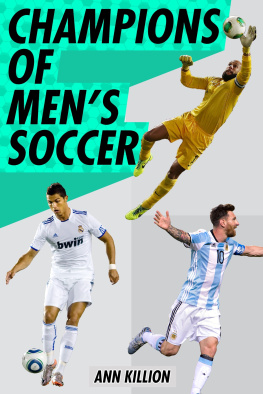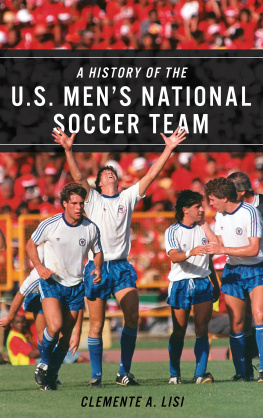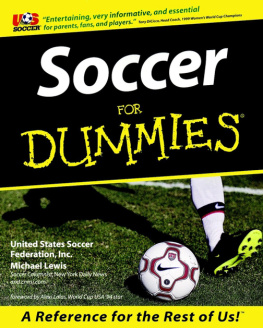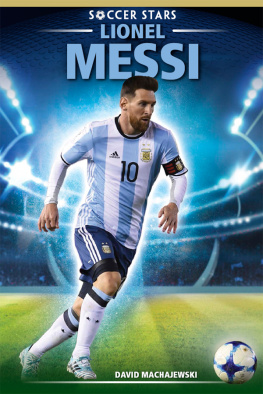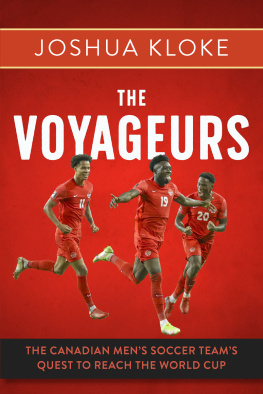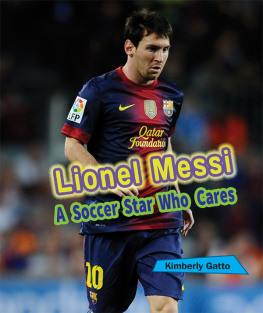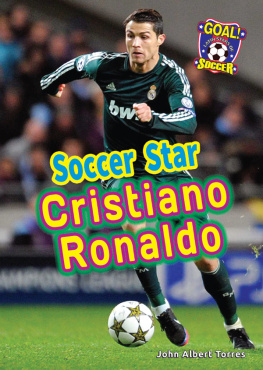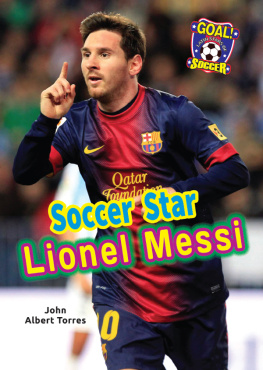Copyright 2018 by Ann Killion.
Penguin supports copyright. Copyright fuels creativity, encourages diverse voices, promotes free speech, and creates a vibrant culture. Thank you for buying an authorized edition of this book and for complying with copyright laws by not reproducing, scanning, or distributing any part of it in any form without permission. You are supporting writers and allowing Penguin to continue to publish books for every reader.
Philomel Books is a registered trademark of Penguin Random House LLC.
Names: Killion, Ann, author.
Title: Champions of mens soccer / Ann Killion.
Description: New York : Philomel Books, [2018] | Audience: Ages: 812. | Audience: Grades: 4 to 6. | Identifiers: LCCN 2017041798 | ISBN 9780399548987 (hardcover) | ISBN 9780399548994 (ebook)
Subjects: LCSH: Soccer playersBiographyJuvenile literature. | Soccer playersRating ofJuvenile literature.
Edited by Brian Geffen.
INTRODUCTION
People like to debate all sorts of things about sports. Whos the best player? Whats the hardest game to master? But theres no debate about this:
The most popular sport in the world is soccer.
Or as most of the rest of the world calls it, football.
You might not believe that fact if you live in the United States. From watching TV or listening to local fans talk about their favorite sports, you would think (American) football or basketball is the most popular sport in the universe.
But every four years, when the World Cup is played, Americans get a dose of reality. And they realize that, nope, soccer is by far the sport that the rest of the world loves best. Unfortunately for the United States, in 2018 they wont attend the World Cup party.
To put the sports fan base in perspective, the final of the 2014 World Cup between Germany and Argentina was watched by an estimated one billion people. Thats one seventh of the worlds population. In contrast, the audience for Super Bowl LI in February 2017 between New England and Atlanta was 111 million.
Not even close.
According to FIFA, the international governing body of the sport, about 265 million people worldwide play organized soccer in some form or another. Thats about 4 percent of the worlds entire population.
Soccer is played in virtually every corner of the planet, on every continent (even Antarctica!), among people of every economic group and ethnicity.
The primary reason for soccers immense popularity is its simplicity. It can be played anywhere: on a field, in a street, on a beach. It requires virtually no equipment, save for a ball. And when even a ball isnt available or affordable, one can be made of balled-up ragsas the famous Pel played with as a childor other material. Two rocks, or shoes, or lines in the dirt can make up the goal. Kids play barefoot or in sneakers if they dont have cleats. In fact, all you really need to play is passion, determination, and some odds and ends.
Some people complain about soccers low scores. But the fact that a game is often won by just one goal highlights the competitive tension and also makes for many upsets, one of the most compelling things about any sport.
Another reason for soccers popularity is the fact that its been around for centuries, perhaps millennia. There is evidence that some form of the sport was played as long as three thousand years ago. There was an early form of the game called cuju in China in the third century BC. Precursors of the game were played in ancient Greece and ancient Rome. Many people believe the Romans spread a form of the game throughout Europe, with the expansion of the Roman Empire, including to England. There are even stories of early versions of the game played by mobs of people, which quickly transformed into riots, therefore leading to the game being outlawed.
Fast-forward to England in the nineteenth century. The game was played at schools, including Rugby School and Eton College, which played two different versions, one where the ball could be picked up (at Rugby) and one where it was played with only the feet (at Eton). One became the game of rugby and the other became football, or soccer.
As the years went on and soccer grew in popularity, the sports guidelines became more official. In 1848, players at Cambridge drew up a set of formal rules for the game. The first international game was played in 1872, between England and Scotland. England went on to export the game to its colonies throughout the British Empire.
The first official soccer organization, the FA (Football Association), was formed at the Freemasons Tavern in London in 1863 with twelve football clubs. Then in 1904, FIFAthe Fdration Internationale de Football Associationwas founded; the original members were Belgium, Denmark, France, the Netherlands, Spain, Sweden, and Switzerland. England joined a year later. Within three decades, FIFA had grown its membership to forty-one nations.
The organized game spread throughout the world, carried across oceans by Europeans to countries where they had a presence, through colonization or business.
The most notable exception was North America. The United States (and Canada) seemed impervious to the charms of organized soccer for a century. Despite Americas English roots and even though the United States is a nation built on immigrants, soccer took a long time to catch on.
Why?
Its difficult to say for sure, but we can make a few educated guesses. First, by the time soccer was expanding across the world, there were already two very popular sports in the United States: baseball and (American) football. Baseball was the countrys first professional sport. Football, which was an evolution of rugby, was established through the growing collegiate system. Some historians believe there just wasnt enough room for another major sport in America, especially a hundred years ago when people had less leisure time to spend either playing or watching sports.
In addition, the United States has always valued being unique and different from European countries. Despite Americas English roots, our countrys story is that we defeated the English in the American Revolution. So its not surprising that our country might reject a sport so very British at its core, when America had its own unique sports to play.
America even has its own name for the game. Though the term

